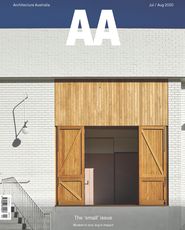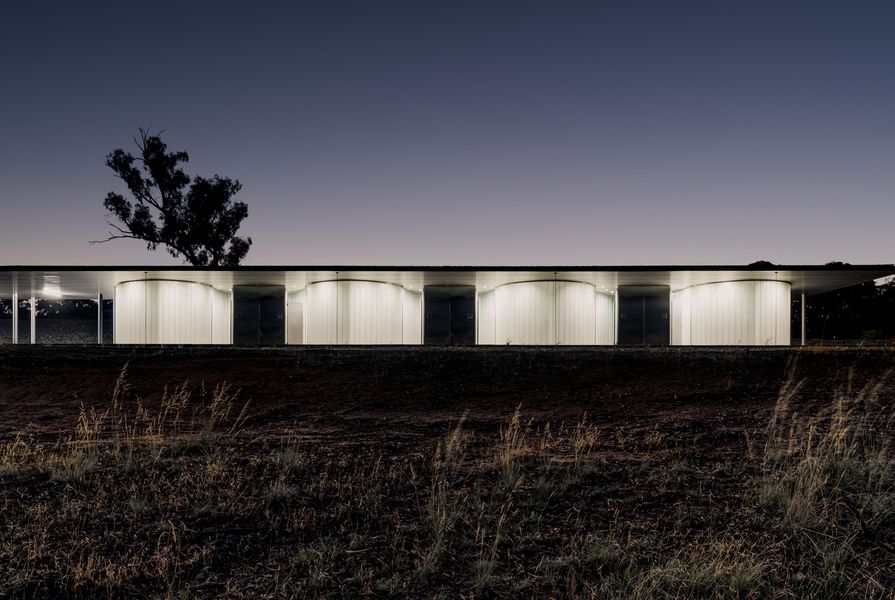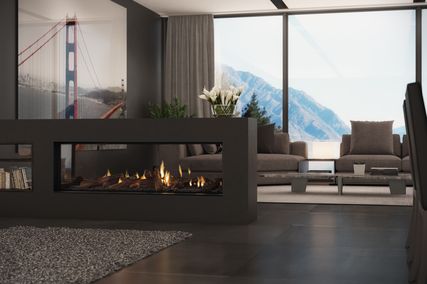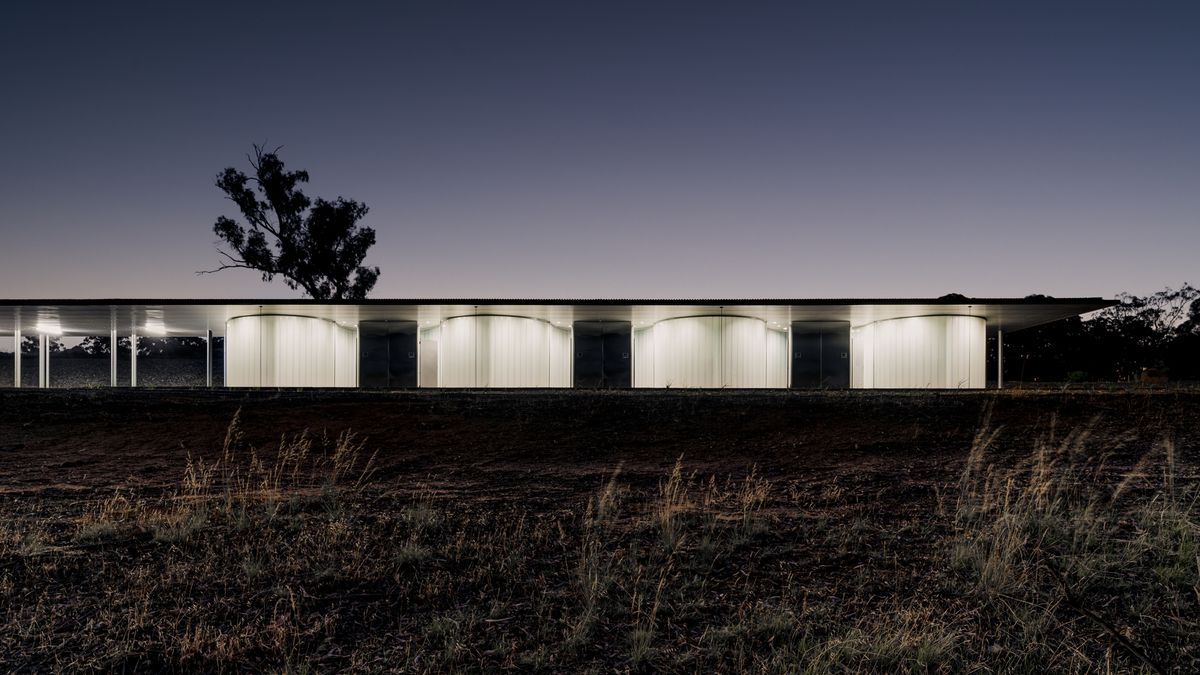The way we design our urban realm, public spaces and amenities is likely to be significantly affected by the current global pandemic. A series of important historical developments in urban planning and management – such as sanitation systems in the mid-nineteenth century – have been responses to infectious diseases. As I’m writing this article, isolated in my apartment during the COVID-19 outbreak, the thought of using any public amenity, let alone a public toilet, screams viral infection (and authorities have temporarily closed down many such facilities for this reason). But, regardless of global pandemics, public restrooms present challenging and layered design problems. As well as carrying an immense cultural and social responsibility, these structures are subject to the toughest of conditions, including vandalism, maintenance issues and high usage. Commissioned by VicRoads, the Jock Comini Reserve Amenities by Kerstin Thompson Architects (KTA) are located at a remote rest stop at Ravenswood, along the Calder Highway in north-western Victoria. Although small in physical footprint, this project is made much larger by the complexities within the brief.
There are plenty of architecturally designed public toilet blocks in urban Australia – particularly from recent years. For example, the iconic Bondi to Bronte coastal walk in Sydney is dotted with a plethora of designer dunnies – from Lahz Nimmo Architects’ Tamarama facilities to the North Bondi Amenities by Sam Crawford Architects. Aesthetically pleasing and well designed amenities are also becoming increasingly common in city parklands, making for a much more pleasurable picnic experience. However, the Jock Comini Reserve Amenities represents an investment outside a trendy inner-city beachside suburb or a scenic parkland. The project was won by competition, demonstrating a genuine commitment to design quality by VicRoads. It must be highlighted, though, that the budget for a small pit stop building like this one is a minor accounting blip relative to the cost of building a road. Nevertheless, the corporation is to be congratulated for taking the opportunity to address issues that go beyond basic safety and hygiene, such as social and cultural equity. KTA’s response is an exemplar in how to skilfully solve such pragmatic concerns with poetry.
The design allows for a non-hierarchical, non-segregated amenities block that caters for diverse cultural and gender preferences.
Image: Dan Preston
Safety and hygiene are the highest priorities for this building type. With no entry or exit, front or back, the amenities can be surveilled from all angles and approaches. In plan, the undulating ribbon or zipper form of the main structural wall creates a series of interlocking individual cubicles. The result is a building with no corners, blind or otherwise, and at night, the translucency of the glass reveals silhouettes while maintaining privacy within the cubicles themselves. This layout also allows for a non-hierarchical toilet block, where the ambulant, accessible and standard toilet suite all appear the same. KTA challenged VicRoads to reconsider how toilet suites are labelled, particularly in relation to segregating male from female, and there was agreement that it was time to move on from the need for gendered space. Taking into consideration the toilet as a site of diverse cultural and social norms, comprehensive research by KTA demonstrated that individual toilet and hand washing facilities best catered for all genders and religious obligations. This ruled out some alternative options with communal hand washing stations.
Deploying a proprietary wall system and repeat elements with minimum detailing requirements, the building itself has been designed as an adaptable system, anticipating VicRoads’ design and construct process. Durability, and ease of maintenance and graffiti removal, were paramount in the material decisions. U-channel glazing was chosen primarily for its resilience, but its light-permitting qualities also serve to uplift the often dark and dank public toilet experience. The balance between the translucency and opaqueness of the glazing panels was tested extensively by KTA and VicRoads to ensure that the cubicles had ample natural daylight while maintaining night-time privacy. In the evenings, the entire block glows as a welcoming lantern or signpost, bringing an unusual warmth and lightness to a generally tough building typology.
The ribbon wall that threads along the contour creates a linear building that sinks into the Ravenswood landscape. A low-lying, single roof shelters all cubicles, circulation and waiting areas, and collects runoff that is used for toilet flushing. Stainless steel is paired with the undulating glazed walls; all surfaces reflecting and transmitting the muted colours of the surrounding bushland. Inside the cubicles, a stainless steel t-section with integrated partition, toilet and basin is used – simplifying the cleaning and maintenance required. Curved and coved junctions reduce the number of crevices and joints where dirt and grime could accumulate.
Jock Comini Reserve Amenities by Kerstin Thompson Architects.
Image: Dan Preston
KTA’s original competition scheme proposed a design that was entirely flexible and adaptable to suit client preferences and site requirements. For example, it provided the option for separate male and female circulation areas around the perimeter of the linear building, on opposite sides of the plan. The ribbon module could be expanded or contracted to suit the number of cubicles needed in any given location. During the competition phase, KTA proposed a number of alternative siting and arrangement options that employed a curvilinear perimeter, including a wave, pods and a double- or single-flower arrangement. The flower options were intended to provide concave pockets within the perimeter, and were much more internalized structures. (The benefit of the final linear form is that it encourages continuous passive surveillance of the site.) This flexibility and modularity raises the question of why the design hasn’t been repeated in other rest stop locations.
The level of ambition in this building is disproportionate to its modest size. Embedded within the design of a seemingly simple and benign structure is a committed attempt to strive for a more inclusive society by considering big-picture social and cultural contexts. In this day and age, this provides a lesson to us all. Perhaps we don’t need to be so focused on exquisite detailing or graphic form making. Instead, lateral thinking can unexpectedly turn a surprisingly complex public brief into architectural delight that promotes civic dignity.
— Katelin Butler is the editorial director of Architecture Media and a graduate of architecture.
Source

Project
Published online: 30 Nov 2020
Words:
Katelin Butler
Images:
Dan Preston,
Kerstin Thompson
Issue
Architecture Australia, July 2020

































